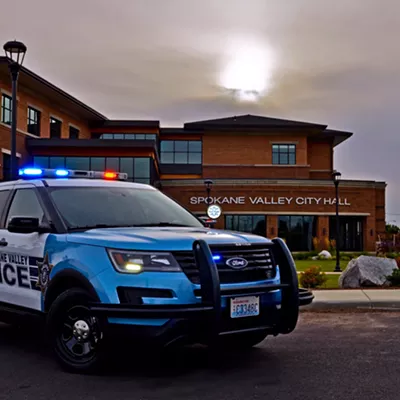You know how sometimes you have an experience that goes beyond words? I'm talking the kind of experience that strips away all powers of articulation and leaves you saying, over and over, "That was so wonderful, so great, it was - You had to be there."
That's what happened last month when I took part in a weeklong gospel-singing workshop led by Bethel AME choir director Elisha Mitchell. Friends will confirm that I got all starry-eyed when I talked about it. And while my enthusiasm was clear, I just ... couldn't ... explain ... what made it so special. I still can't. I wish there was some kind of a button I could put on this page that would drop you in the middle of a 60-voice choir with a full-blown band and let you feel the excitement of all that sound and effort. Bear with me.
Now, gospel music generally isn't written down, Elisha tells me. Even if the basic melody and harmony parts get put down on paper, that sheet music is essentially a suggestion. "You can't capture it on paper," she says. "You've got to have room for the Spirit to move."
The building's rockin' as I enter the church on my first night. And soon I'm thinking, "Honey, this isn't your mama's church music." After all I'm an Irish-Catholic-Yankee kid from the Boston suburbs -- not exactly a hotbed of gospel music. My dad's favorite Mass was the one with no music (because it got over with faster). I began singing in the church choir while I was in high school and I've grown to love the dimension that music brings to a worship service. But most of the music I've done has lots of quarter notes that land on the downbeat. You know - church-lady music.
Now, my church choir has branched out in some adventurous directions: We sing bilingual masses (in Spanish and English) and we've learned songs in Swahili and Zulu thanks to several visiting sisters and priests from Africa. We always trot out the Latin chants during Holy Week and Christmas, and we've even adopted a couple of spirituals - I've sung the solos on Steal Away, although I always stick pretty close to what's written. But contemporary black gospel - that's straying pretty far from my milieu.
The workshop runs for five nights of two-hour sessions, Monday through Friday, culminating in a benefit concert at Gonzaga's Martin Centre on Saturday - an ambitious schedule. Singers from 12 different churches are here, and the Bethel AME folks go out of their way to extend gracious hospitality to everyone.
My workshop folder contains printed lyrics for eight different songs: no notes, no sheet music. Reality hits. I have to learn through my ears, to open up and let the songs imprint themselves not only in my mind but also in my heart.
By the end of the first night, we've learned most of one song in four parts: soprano, alto, tenor and baritone. Finally, we get to put all the parts together with the instruments. It's a little ragged - OK, my tiny part is a lot ragged - but I start to catch a glimmer of what this will sound like once we all sort of know what we're doing. The sound is so full that I can't tell whether I'm singing the right notes or not, but I'm thrilled to be inside this wall of sound. I can't help moving my body - partly because everyone around me is moving, but mostly because the music gets into my bones and I simply have to move.
By the third night, we've run through all but one of the songs. On Thursday, we learn the last song, an African-inspired piece with a Zulu refrain. I have a fleeting moment of pride when a couple of the other sopranos ask me how to pronounce the Zulu words - and I know! I slide back into my familiar role of clueless person, though, when we review one of the songs from last night and I get lost. At moments like these, I'm really glad my voice is but one of many.
Friday night brings a longer practice because it's a full rehearsal for the concert. We run through all the songs. While I'm not contributing much volume to this sound, I'm grateful simply to be part of it.
Saturday is concert day. I carry my lyrics sheets onstage with me like some kind of security blanket, but then a funny thing happens - I find I don't need them. I watch Elisha, and her clear, animated direction tells me everything I need to know. When the music is well received, she adds another repeat on the fly, but I follow along. "In a choir, you've got to have one eye on the director and the other eye on God," she says. "That's the way it should be."
And that's the way it was. It was so wonderful, so great. It was - oh, you should have been there!
Publication date: 05/26/05













